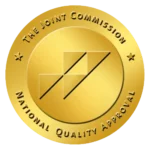Suboxone, a medication to treat opioid addiction, can lead to dependence. Dependency means the body relies on the drug, and suddenly stopping it can cause withdrawal symptoms.
Long-term use can create a reliance, and quitting may trigger discomfort. People may face challenges when discontinuing Suboxone, experiencing symptoms like anxiety, pain, and insomnia.
Gradual, supervised tapering minimizes withdrawal risks. It’s crucial to consult healthcare professionals when considering Suboxone, as misuse may lead to unintended consequences.
Key Takeaways
Suboxone, a medicine to treat opioid addiction, has the potential to cause dependence. Here’s what you need to know:
- Suboxone can lead to dependence, requiring gradual tapering to avoid symptoms of withdrawal.
- Responsible use, prescribed dosages, and regular check-ups are crucial to maximizing Suboxone’s benefits while minimizing misuse and dependency risks.
- Successful Suboxone treatment involves collaboration with professionals, combining medication with therapy, and tailored aftercare plans for lasting recovery.
The Haven Detox-Little Rock provides expert guidance and support for informed decision-making on Suboxone use. Call us at (501) 271-3342 for a comprehensive approach to addiction recovery.
Suboxone Explained
Suboxone, a prescription medication, is a controversial treatment for opioid dependence. Critics argue that it merely substitutes one addiction for another. Formed of buprenorphine, a partial opioid agonist, and naloxone, an opioid antagonist, it aims to alleviate withdrawal symptoms and cravings.
Detractors claim its potential for abuse, citing instances where individuals misuse or divert the medication. Concerns also revolve around extended usage, as some people depend on Suboxone for extended periods. Critics argue that it doesn’t address the root causes of addiction and may perpetuate a cycle of dependency rather than fostering proper recovery.
Suboxone acts as a crucial tool in the arsenal against opioid addiction. By reducing cravings and withdrawal discomfort, it facilitates a gradual transition away from more potent opioids. This harm reduction approach promotes a more controlled and sustainable recovery journey.
Addiction: Understanding The Concept
Addiction involves reliance on substances, often leading to compulsive drug-seeking behaviors. It arises from repeated substance use, altering the brain’s wiring and affecting judgment.
Genetics, environment, and mental health contribute. Addiction isn’t a choice but a medical condition. It impairs self-control and decision-making.
Addictive Behavior
Suboxone can lead to addictive behavior if not used as prescribed. Some individuals may take more than prescribed, seeking a euphoric effect. This misuse can lead to dependence and hinder recovery. It’s crucial to strictly follow medical guidance, as improper use may contribute to a cycle of addiction.
Suboxone and Addiction
Suboxone can have drawbacks that lead to dependence. Individuals misuse Suboxone, seeking a high. Long-term use may create dependency, making quitting challenging. The risk of addiction primarily arises from self-administration practices deviating from prescribed guidelines.
Suboxone, like opioids, impairs thinking and slows breathing, risking overdose. Mixing Suboxone with alcohol or other drugs intensifies risks. People must use it precisely as prescribed to avoid issues. Also, illegally accessing it is harmful.
How Suboxone Functions in the Body
Suboxone’s action in the body involves binding to opioid receptors, mitigating cravings and withdrawal symptoms. It stabilizes brain chemistry, enabling recovery.
While serving as a safer alternative to potent opiates, there exists a potential for dependence. Responsible use, under medical guidance, is paramount.
In addiction treatment, Suboxone offers a safer route for individuals to discontinue opioid use gradually. Providing a milder effect eases the transition, reducing the likelihood of severe withdrawal symptoms. It acts as a bridge to a more controlled and sustainable recovery.
Red Flags for Suboxone Use
Identifying signs of Suboxone addiction is pivotal for timely intervention. Vigilance regarding physical and mental changes helps address emerging issues promptly.
Signs of Suboxone Addiction: Signs of Suboxone addiction may include an increasing tolerance to the medication, persistent cravings for higher doses, or using Suboxone in a manner inconsistent with medical guidance.
Physical and Mental Changes: Observing physical and mental changes is essential in gauging the impact of Suboxone use. Mood swings, sleep disturbances, or neglect of responsibilities could indicate problematic usage. Awareness of these changes allows for prompt intervention and adjustment of the treatment plan.
Managing Suboxone Usage
Guidelines for safe and effective Suboxone use involve adhering to prescribed dosages, avoiding unsupervised alterations, and attending regular check-ups. Following these guidelines is crucial for maximizing the benefits of Suboxone treatment and minimizing potential risks.
Guidelines for Safe and Effective Use
Ensuring safe and effective use of Suboxone involves meticulous adherence to prescribed guidelines. This includes taking the recommended dosage, avoiding alterations in consumption without medical supervision, and attending regular check-ups. Responsible use is fundamental for successful addiction management.
Suboxone Addiction Help
If dependence on Suboxone becomes apparent, seeking professional help is crucial. Abrupt discontinuation can lead to withdrawal symptoms, so a gradual tapering plan supervised by a healthcare professional is recommended. Open communication with healthcare providers is critical to successful recovery.
Importance of Medical Professional
Collaboration with medical professionals is indispensable in Suboxone treatment. The appropriate dosage, regular check-ups, and incorporating therapy into the treatment plan are vital components of a comprehensive approach to opioid addiction recovery.
Dosage
Dosages depend on individual needs and the severity of addiction. Typically, treatment starts with lower doses, adjusting as necessary.
A Suboxone film or tablet is placed under the tongue, allowing absorption. Initial doses may range from 2-4 mg of buprenorphine. Over several days, this may increase to a maintenance dose of 8-24 mg.
Medical professionals monitor patients closely, ensuring effectiveness without causing excessive sedation. It’s crucial to follow prescribed dosages to minimize withdrawal symptoms and enhance recovery, always under the guidance of a healthcare provider.
Check-Ups
Regular check-ups are essential to evaluate progress and promptly address any emerging issues. Open communication with healthcare providers ensures a collaborative approach to successful addiction management. These check-ups are opportunities to fine-tune the treatment plan for optimal results.
Therapy
Combining Suboxone treatment with therapy enhances its effectiveness. Counseling and behavioral therapies help individuals address the root causes of addiction, develop coping strategies, and foster lasting recovery. This holistic approach addresses both the physical and psychological aspects of opioid addiction.

Treatment Options for Suboxone Addiction
Navigating Suboxone addiction involves tailored approaches. Here are some of them:
- Detoxification: Begin with supervised detox to safely eliminate Suboxone from the body and manage withdrawal symptoms.
- Inpatient Rehabilitation: Consider residential treatment for comprehensive care, including therapy and support in a controlled environment.
- Outpatient Programs: Attend outpatient programs for flexibility while receiving counseling, education, and support.
- Counseling and Therapy: Engage in individual and group therapy to address underlying issues and develop coping skills.
- Medication-Assisted Treatment (MAT): Explore alternative medications like methadone or naltrexone, under medical guidance, to support recovery through medication-assisted treatment.
- Support Groups: Join groups like Narcotics Anonymous (NA) for shared experiences and encouragement for you and others.
- Aftercare Planning: Develop a personalized aftercare plan for continued support post-treatment, ensuring a smoother transition to everyday life.
With a combination of medical supervision, therapy, and support networks, individuals can effectively overcome Suboxone addiction, paving the way for a healthier and substance-free future.
Frequently Asked Questions (FAQ)
What is Suboxone, and what is it used for?
Suboxone is a medication primarily used in the United States to treat opioid use disorder, including heroin and other opioid dependencies. Marketed under the brand name Suboxone, it is prescribed by doctors to mitigate substance abuse.
Comprising both buprenorphine (a partial agonist) and naloxone, Suboxone helps manage opioid cravings while discouraging Suboxone abuse. As a partial agonist, it interacts with opioid receptors, alleviating withdrawal symptoms without producing the full effects of opioid agonists.
However, misuse can lead to side effects. It plays a crucial role in reducing opioid-related harm, and its use is widespread in cases of substance use disorder as part of a comprehensive treatment approach.
Can Suboxone make you depressed?
While Suboxone is usually used to treat opioid addiction, it can have side effects, including potential mood changes. Some individuals may experience feelings of depression or mood swings while taking Suboxone. However, it’s essential to note that individual reactions vary, and not everyone will have the same response.
Factors such as personal health, dosage, and concurrent medications can influence how Suboxone effects mood. If someone using Suboxone is experiencing persistent or severe depression, it is crucial to consult a healthcare professional for guidance and potential adjustments to the treatment plan.
Is Suboxone hard on your body?
Suboxone can have side effects and potential impacts on the body. Its side effects include nausea, headache, and constipation.
Long-term use may lead to dependence, and abrupt discontinuation can result in withdrawal symptoms. Suboxone holds buprenorphine, a partial opioid agonist, which can affect the respiratory system and, in rare cases, cause respiratory depression.
Additionally, combining Suboxone with certain substances, especially other central nervous system depressants, can be dangerous. While it can be an effective tool in addiction treatment, it’s crucial to use Suboxone under medical supervision to minimize risks and ensure appropriate management.
Wipe Out Addiction at The Haven Detox-Little Rock
At The Haven Detox-Little Rock, we stand as your dedicated allies in overcoming the challenges of addiction. We combine expertise with empathy to guide you toward lasting recovery.
A bridge of comprehensive services includes personalized Suboxone addiction treatment, ensuring a tailored approach to your unique needs. We provide specialized detox programs, offering a gentle and supervised start to your journey towards sobriety.
Our residential care creates a comforting environment, fostering healing and growth, while cutting-edge IV therapy delivers advanced intravenous treatments, replenishing and rejuvenating during recovery.
So, trust in our commitment to compassionate care as we navigate the path to recovery together. Call us at (501) 271-3342, and let us be your catalyst for transformation.





